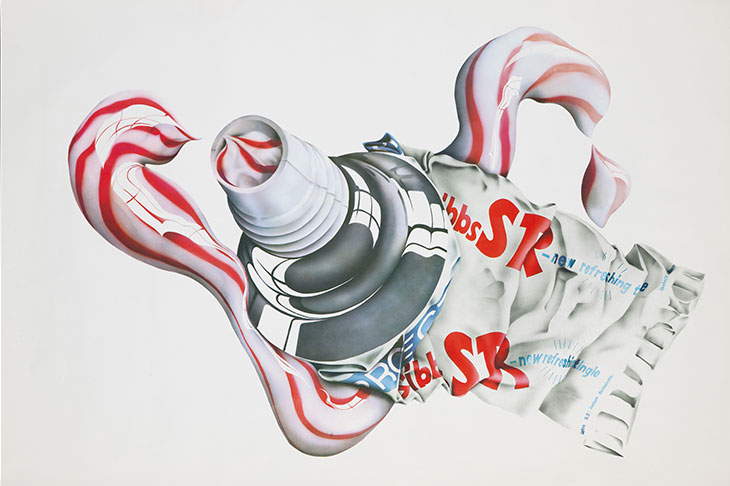A tooth in the head is worth ten on a plate. Emblazoned in large capitals above an immaculate, grinning pair of pink dentures on a gold tray, this dental hygiene motto greets you on the second floor of London’s Wellcome Collection. It serves as the introduction to the rich cultural history that is ‘Teeth’, an exhibition charting Western society’s complex relationship with the only visible part of our skeleton.
At the centre of this story is the development of dentistry over the past three centuries, from basic, painful tooth extractions to the present day. Dental tools abound, from the beautifully packaged mother-of-pearl sets of the Victorian high-class dentist to a fascinating display showing the stages of making a bone-handled toothbrush in the early 20th century. A series of dental chairs presented in the middle of the space makes very clear how far things have come. The all-singing, all-dancing digital set-up of 2017 is a far cry from the 19th-century oak barber surgeon’s chair, adapted to give the dental patient more supportive arms and a headrest.
Napoleon Bonaparte’s toothbrush (1790–1820), Wellcome Collection
The myriad dentures on view are perhaps less of a visual treat, but certainly give a frisson of sympathy as you imagine the awkward objects inserted into your own mouth. George Washington’s tight-lipped visage on the American dollar bill makes more sense viewed alongside one of the many sets of dentures produced to relieve his severe dental problems. The toothy tour of the rich and famous continues with Edmund Burke’s tooth plate, Napoleon’s toothbrush, and pictures depicting the differing smiles of queens Elizabeth I and Victoria – one hiding black and rotting teeth behind constantly pursed lips, the other thought to be the first royal to reveal her pearly whites in a portrait.
Saint Apollonia and her Tormentors (1850–1928). Wellcome Collection/Science Museum Group
The range of images and objects on display, many drawn from the Wellcome’s rich library, demonstrates how long teeth and dentistry have been part of our visual culture. As early as the Middle Ages the martyred Saint Apollonia was adopted as the patron saint of toothaches – here she is represented in both an 18th-century print and a wooden statue from the mid 19th to early 20th century. In A French dentist showing a specimen of his artificial teeth and false palates (1811), Thomas Rowlandson satirises the fashion for dentures made from shining porcelain, while Francisco Goya explores a darker side of ‘dentistry’ in a print published in 1797, depicting a woman stealing the teeth of a hanged man. Hendrik van der Burgh’s classic view of a Dutch interior from 1817 features an operator attending to the teeth of a man, whose pain causes him to startle a dog and kick over a basket of eggs.
A French dentist showing a specimen of his artificial teeth and false palates (1811), Thomas Rowlandson. Wellcome Collection
Our view of the dentist changed fundamentally in the late 1940s, with the birth of the National Health Service in Britain, and a government drive to improve the state of the nation’s teeth. Childhood toothcare was targeted in particular, with campaigns advocating for daily brushing, reduction of sugar intake, and regular trips to the dentist. The exhibition includes a series of charmingly period films promoting oral hygiene, including the ‘Odd Ode’ from 1964 – ‘If you wish to win your lady fair, do not neglect your dental care’. These are accompanied by a range of posters, some quite artful, such as the superb Maxam toothpaste campaign from JWT China, in which a tooth has decayed into minute classical ruins redolent of the Roman Colosseum.
For most children today, teeth are inextricably related to the Tooth Fairy, to whom the exhibition includes a range of letters, and some replies. Points must go to the parent who wrote a studiously formal reply to their child from ‘Gordon Thistledown-Moondust, Chief tooth fairy, London division’. It can’t help but bring a smile to your face – whatever the state of your teeth.
‘Teeth’ is at the Wellcome Collection, London, until 16 September.
